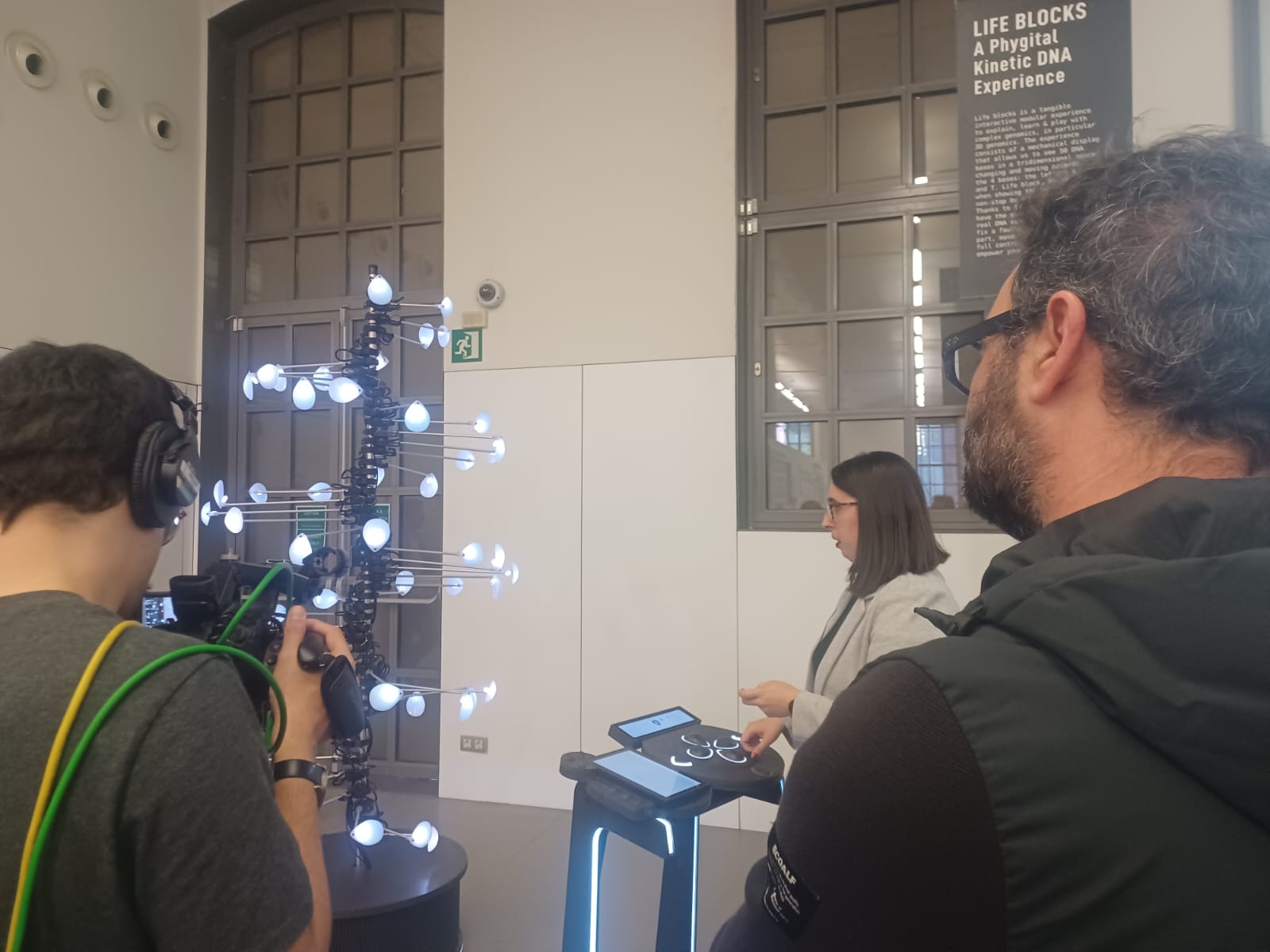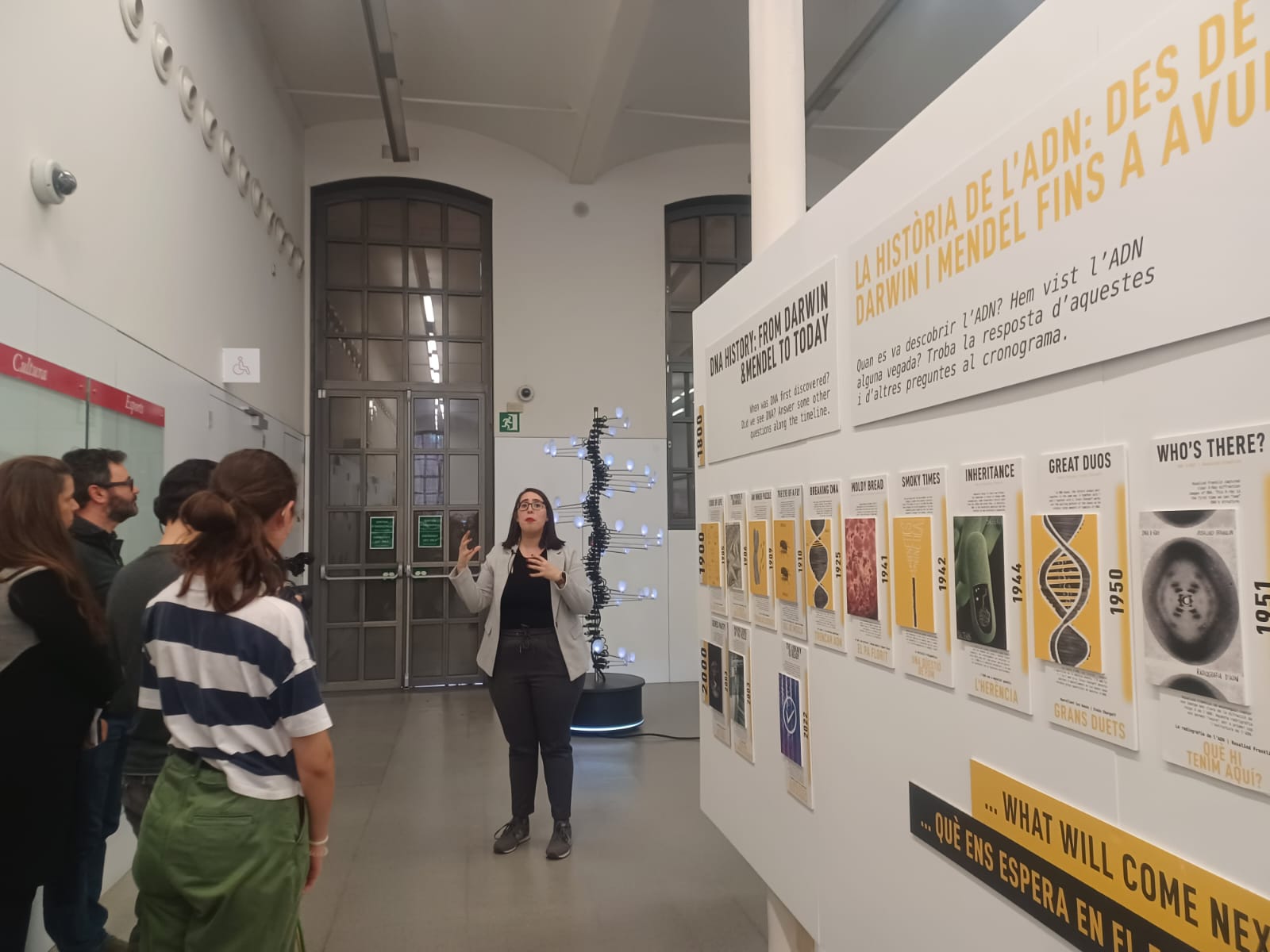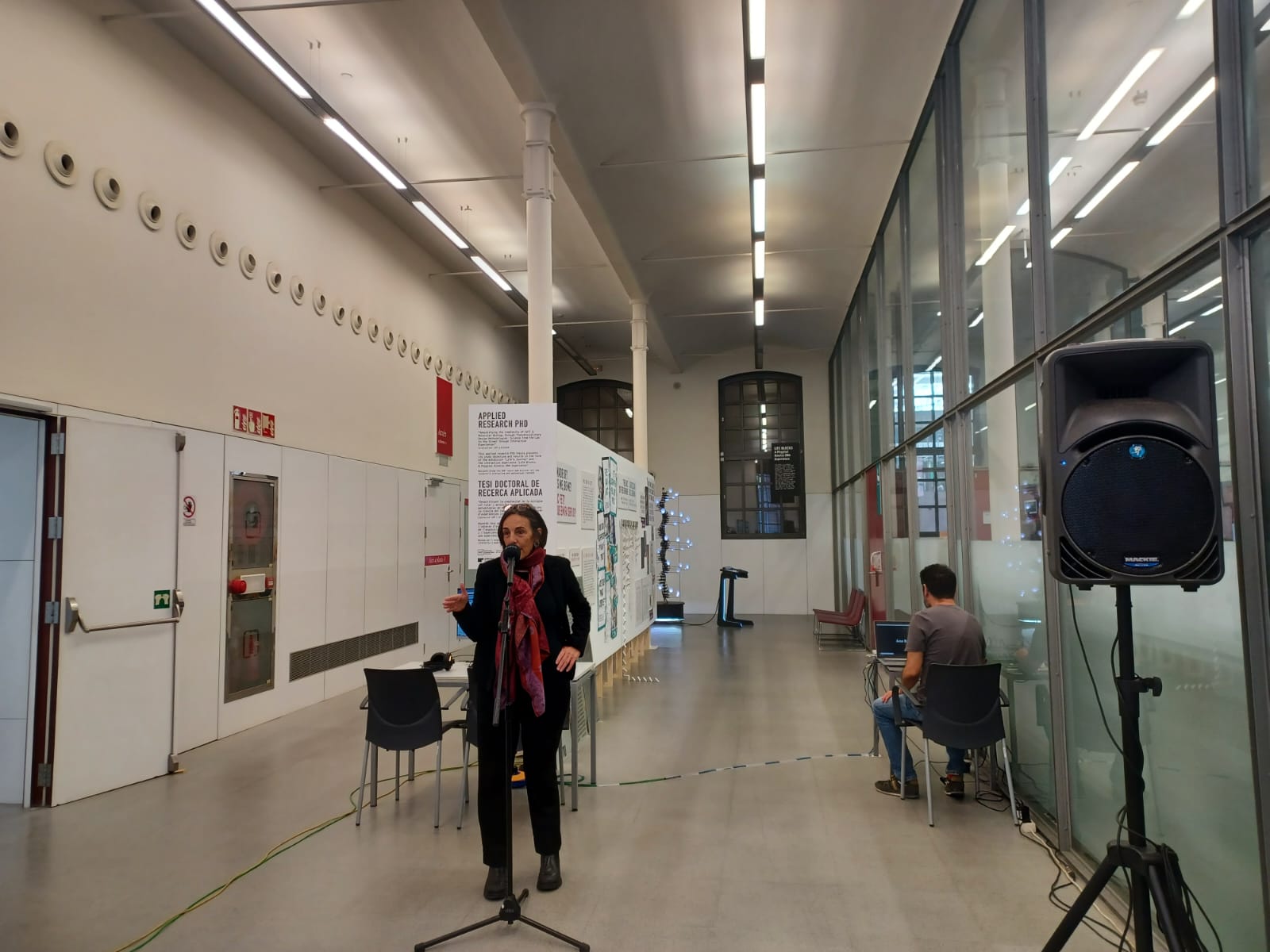Explaining the human genome using 3D design, the idea behind an interactive installation at the Poblenou campus Library
Explaining the human genome using 3D design, the idea behind an interactive installation at the Poblenou campus Library
Explaining the human genome using 3D design, the idea behind an interactive installation at the Poblenou campus Library
The installation Blocs de vida (Blocks of life) is the material representation of Carla Molins’ applied doctoral thesis, co-directed by the UPF Department of Communication and Elisava, Faculty of Design and Engineering of Barcelona. The installation is the result of the Marie Skłodowska-Curie European research project, ChromDesign.

Scientific dissemination continues to seek creative and innovative ways to convey technical concepts in a more accessible and understandable way for all publics. A good example of this is the installation that explains the chromosomes of the human genome through three-dimensional and interactive design, which can be seen from today, 3 November, until 18 December at the UPF Poblenou campus Library/CRAI.
The author of this installation, called Blocs de Vida, is the researcher Carla Molins, a creative technologist who has specialized in the interaction between design, technology and science to generate tangible elements concerning complex scientific knowledge. In fact, the installation on the human genome is the material representation of Carla Molins’ applied doctoral thesis. The thesis, entitled Demystifying the complexity of Cell & Molecular Biology through Transdisciplinary Design Methodologies: Science from the Lab to the Street through Interactive Experiences, was co-directed by Sergi Cortiñas (coordinator of the Scientific Communication Research Group, GRECC, and professor at the UPF Department of Communication) and Francesc Ribot (head of the Graphic Design mention of the undergraduate degree in Design and Innovation at Elisava). Today, Carla Molins presented the installation at noon, before defending her doctoral thesis.
Carla Molins: “there is still ample scope for doing research into new ways of representing DNA”
The interactive installation of the human genome is part of an exhibition space that, as Molins explained, “aims to contextualize a very complex topic as is the functioning of DNA”. The exhibition has two parts: a first section reviews the historical evolution of research and of the scientific knowledge of DNA, while the second addresses the different systems that have been used to date to represent it. In this regard, Molins highlighted: “there is still ample scope for doing research into new ways of representing DNA”. Her interactive installation enables you to understand the movement of DNA in different ways: a first mode allows you to visualize its different bases (A, G, C...); a second, to freely move the different pieces of the structure; and a third, to understand the mutations associated with different diseases.

Today’s presentation involved the participation of Cristina Pujades, vice-rector for Research at UPF; David Comas, director of the University’s Doctoral School; Albert Montull, director of the Elisava Technical Secretariat; Anna Magre, director of the Library; Matilde Obradors, in charge of Culture at the UPF Department of Communication; and Frederic Guerrero, coordinator of the doctoral programme in Communication.
Cristina Pujades highlighted that the thesis contributes to two of UPF’s main priorities: interdisciplinarity and internationalization: “This research is inter- and transdisciplinary and polyhedral perspectives are fundamental to face the challenges of the 21st century. In addition, it has been conducted within the framework of a European Marie Skłodowska-Curie fellowship and this contributes to disseminating the research”. Regarding this thesis, David Comas also spoke in favour of “breaking the dichotomy between basic and applied research and supporting quality research in general”, like the project presented today. Albert Montull stressed that the defence of today’s thesis is “the culmination of research that began five years ago”, within the framework of the European project ChromDesign.

An innovative format in the defence of a doctoral thesis
Frederic Guerrero and Matilde Obradors referred to the innovative nature of the defence of the thesis, the first to be defended at the University outside a conventional hall or classroom. For Guerrero, “this presentation will leave its mark and act as a precedent for what will be done on the doctoral programme from now on”. Matilde Obradors also highlighted that the Library is an ideal space to materialize the project of the Department of Communication to create an “exhibition space for applied theses” and seek “new ways of sharing knowledge”. Finally, Anna Magre added that this first experience is “the seed of the exhibition space we wish to create at the Library”, as part of its transformation process.
ARSENAL, UPF’s innovation and transfer ecosystem, has facilitated the materialization of the results of the thesis through this installation
The thesis by Carla Molins, a researcher with a Marie Skłodowska-Curie European grant, awarded to Elisava Research and another twelve leading European genetic research centres, is linked to the GRECC and the Scientific Communication Observatory of the UPF Department of Communication. The set-up of the exhibition at UPF has received the support of the Department’s ARSENAL ecosystem, which aims to foster the transfer to society of the outcomes of research or projects initiated in the University environment, as well as innovation in different fields of knowledge. To do so, ARSENAL has various platforms, one of which (ADVANCED) is dedicated to providing support to doctoral theses.
As a Marie Skłodowska-Curie researcher, Carla Molins is linked to the project ChromDesign, an innovative and interdisciplinary network of 13 European academic and private institutions. It aims to characterize how 3D chromatin organization affects gene regulation during cellular differentiation and in several human disorders. ChromDesign believes that science communication and education is essential for the future of science and of society. One of the institutions hosting the project is Elisava Research, an interdisciplinary research team of Elisava, Faculty of Design and Engineering of Barcelona.
